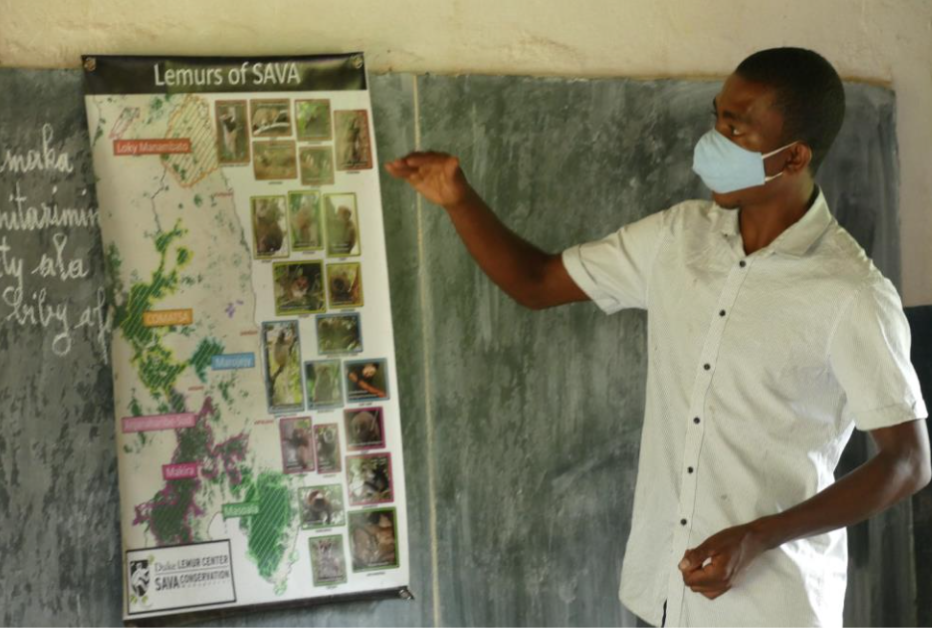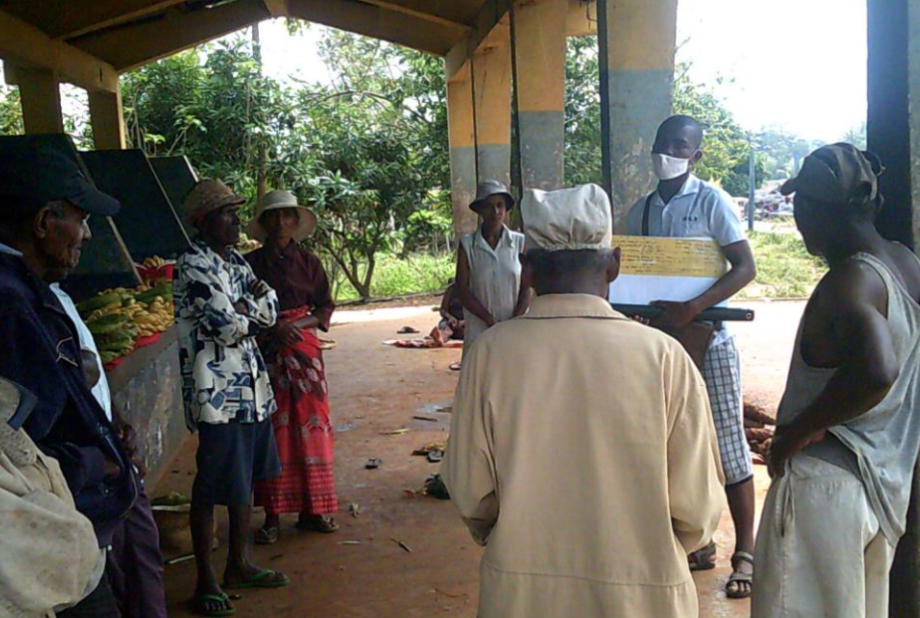The DLC-SAVA Conservation Mobile Interpretive Center:
A new dimension in our Environmental Education Program
By Evrard Benasoavina, Lanto Andrianandrasana and James Herrera
Environmental education (EE) is a crucial component of conservation. Knowing about the environment and the important benefits we get from nature is a first step towards managing and preserving natural resources. At the DLC, we have had education programs both in the US and in Madagascar for decades. This year, we are taking a new direction in our EE programming — actually, we’re taking many new directions, because we’re taking our program on the go!
Introducing the DLC-SAVA Mobile Interpretive Center!
Over 70% of Malagasy people live in the rural countryside. Some places are so remote, it takes several days of driving and walking to reach the villages. Educational opportunities for these far-off villages are often limited. Many villages only have access to one primary school, and secondary or high schools require sending kids to stay in bigger towns. Because of these limitations, we decided to bring our education programs out to those most remote, marginalized communities. These are also the people who often live next to the forest, and rely on the forest for their daily needs, so it is critical to reach these people because they are the best opportunity for conservation and stewardship in this region.

Evrard Benasoavina explains the unique lemur species found in SAVA region. Many students did not know there were so many different kinds of lemurs, and they said they had never seen them even though they live very close to the forest.
In 2020, we began several new approaches to EE that include more interactive ways to engage with people of all ages. We are now packing up these approaches into our truck, and taking our EE on the move. We have already reached 10 different communities in the districts of Antalaha, Sambava, and Andapa, and about 400 children have participated in our outreach programs. Some of these villages took 2 days to reach, and we stayed several days so we could have time with all the students, teachers, and parents. We bring posters which are displayed at the schools, movies about biodiversity are shown, and since kids of all ages love to color, we bring educational coloring books about lemurs and nature. Kids also get a snack time with healthy fresh fruits, since they are staying after school for these programs and are quite hungry.

The kids from a school in Antalaha district, showing they liked the lesson and their snack!
The enthusiastic and motivated teachers request training in how to teach EE in the classroom, and we conduct workshops to help them continue teaching about the environment on their own. Over the years, we have trained over 2,500 teachers about how to teach EE for classes of all ages. In our new lemur awareness lessons, two teachers were trained last month and are already able to conduct our lemur lessons as the new school year starts this month.

The kids use a lemur coloring book made by PICC Madagascar to make their own educational posters which they hang at the school.
Young people aren’t the only demographic that appreciates environmental education. Adults are also fascinated because they see their environment changing during their lifetimes. They know the climate is changing because it affects their farming more and more every year. They want to understand why the climate is changing, and how to work with it. When we explain the value of forests for adapting to and mitigating climate change, they are very motivated to protect and restore the forests around them. Many agree that planting trees is an important step, and want to have more access to quality seedlings and training in how to properly restore the landscape. That is why we also combine our EE with hands-on skills development in agroecology and reforestation.

Evrard holds an informal lesson with adults during the market day. All were very interested to hear more about biodiversity, the benefits they get from nature, and how to preserve it.
To take this program further, we want to develop new technologies to make our lessons even more interactive. For example, we are in the process of creating a digital, interactive lesson plan which we can install on hand-held touchscreen tablets. Then the kids can work in groups to work through the e-lessons, with media about lemurs like movies and information about their biology. The kids will take a quiz with the tablet, which lets us all assess how well they learned the material. We also hope to have microscopes with cameras, so we can look at samples of soil and water and see the microbes living there. If we can show the kids the microbes, they will understand better about what is living in every pinch of soil, and in the water they drink!
We also teach about sustainable land use, like regenerative agriculture, reforestation, and alternatives to hunting lemurs like raising chickens and fish farming. All these programs are part of the DLC-SAVA Conservation portfolio, and we bring our experts to teach increasingly more about sustainability and development.
These are just a few of the new ideas we have for how to improve our EE program. We are very grateful to all our supporters who have made our programs possible, especially the Cooke family who has generously sponsored these new developments in our EE approaches. As the new school year begins, we will increase our activities and bring the mobile center to even more villages. We aim to reach at least 40 villages this year, reaching over 1,500 children, teachers, and parents!
If you want to read more about Evrard’s educational programming, check out his website!
The DLC’s conservation projects in Madagascar are run exclusively on grants and donor funding. Please consider making a tax-deductible donation today! Visit our Mission: Madagascar Gala page to learn more benefits of making a donation before October 1, 2021!


